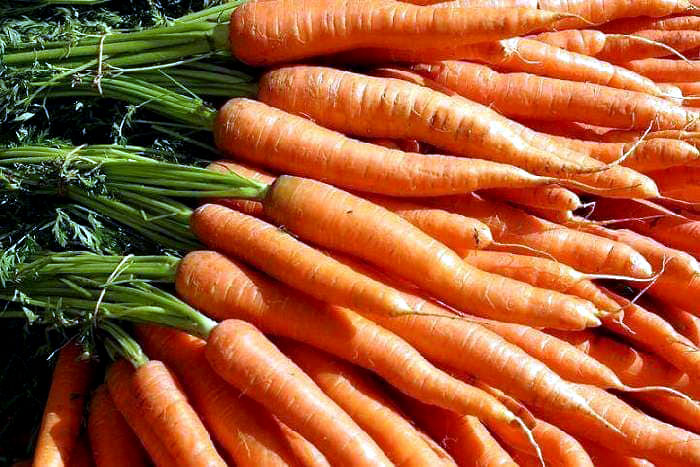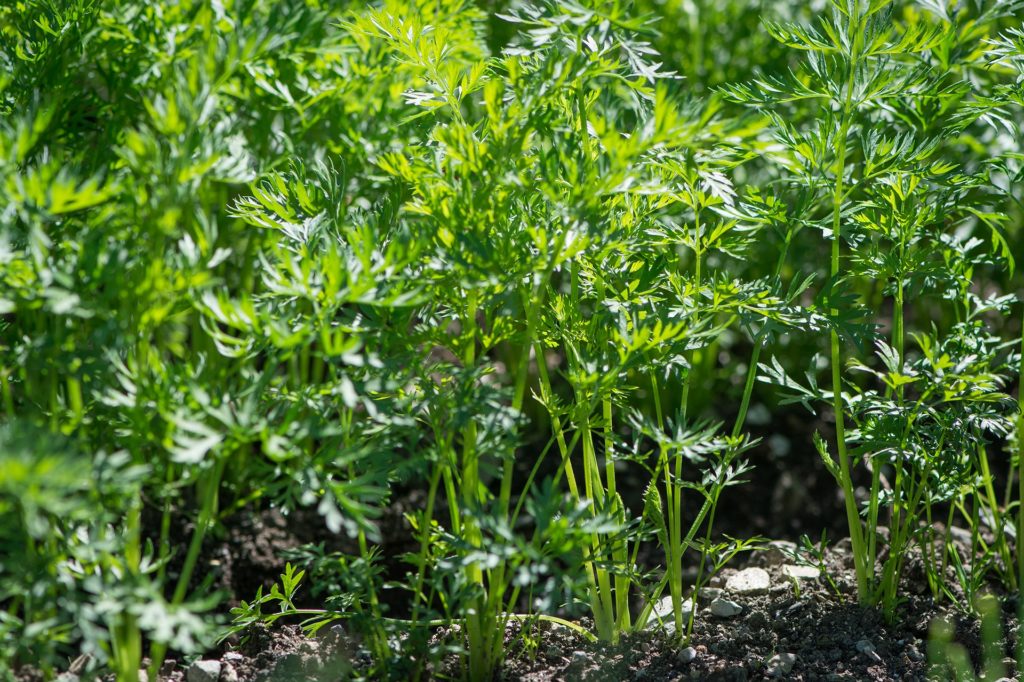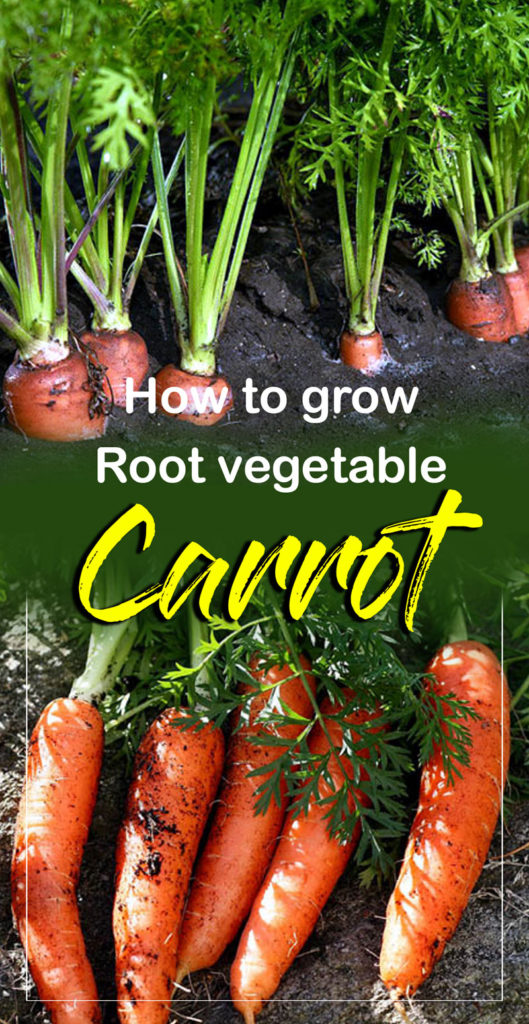Growing Carrots
Growing carrots in containers | How to grow Carrots at home. Carrots (Daucus carota) are very easy in your kitchen garden or containers. It is a nutritious and healthy vegetable and is the most consumed, there is always a demand in the market. In this article, we will show you a simple way of growing carrots at home. It is important to pay attention to some important things before planting.
Carrots are usually orange in color, though purple, black, red, white, and yellow varieties exist. Carrots are a domesticated form of the wild carrot Daucus carota, native to Europe and southwestern Asia.
Classification
Scientific name Daucus carota
Common name Carrot
plant type Root vegetable.
Soil Sandy soil
Soil pH Natural
Sun Full sun
Zone 4-10
How to grow carrots
For growing root vegetables, such as carrots and radish, patience, belief, and some knowledge of growing conditions is necessary. See the following tips for successfully growing the root crop. It is a hardy plant, so you can sow it anytime from late May to late July.
Soil and location
If you want productivity in the abundance of root crops, then you need to prepare especially soil for planting. Loosen the soil of the garden or bed where you want to plant it. Root crop grows rapidly in loose soil and remains moisture constant. Much acid is not good in the soil for root crops. Before fertilization, add fertilizer like urea. For this, the optimum pH of the soil is 6 to 6.5.
Planting
Plant the carrot in 1 to 2 feet apart in rows, it is the best way to develop a carrot. Plant the seeds in the depth of ½ inches depth and 1 to 2 inches apart.
After planting carrots in the garden, wait for the plants to appear and make about 4 inches high, then thin planting 2 inches apart. Thin the crop regularly to 4 inches apart.
Cultivation
Carrots require full sunlight of but tolerates some shade. The fertilizer used but depending on the quality of soil, carrots crop required a low level of nitrogen, phosphate, and high potash.
Temperatures
You know that carrot production occurs in the early spring season. The temperature of the soil for 45 to 80 ° f can be anywhere. Several species are available and they are maturing from 70 to 120 days. Carrot is slow germination in the meantime its security is required, otherwise it may damage from birds or heavy rainfall. You can also use the net. If you protect it from freezing coolness in temperature plastic tunnels can use.
Fertilizer
Feed with a balanced fertilizer 5-6 weeks after the sowing of carrots you planted.

Growing carrots in containers
If you have limited planting space, it is easy to grow carrots in the containers but you should be aware of its variety, selection of the container, and the weather. Choose small varieties to grow carrots in pots. For this, choose a deep container in which the edible roots can grow well in the soil, and keep the soil wet for maximum growth.
- To develop a carrot in the container, sufficient deep containers should be used.
- Containers should have good drainage, in the case of waterlogging, the root crop can rot.
- Some varieties are suitable for planting in containers such as small and oxyhart. The roots of these carrots are only 2 to 3 inches long.
- Container-grown carrots require regular moisture so give regular water.
- Use the mulch, it will keep moisture and needs less water. Read more.
Carrots care
- Give your carrot at least 1-inch water every week. Mulching around the plant helps save water and keep the soil cool.
- Enrich the soil with organic substances at the time of planting, or else it will require food after about 2 weeks of the emergence of carrots. You can use any good vegetable fertilizer.
- Sometimes its roots become distorted, to prevent this, keep the production area free from weed.
Problem with pests
- Its biggest problem is the rust fly. It gives its eggs in the soil around the top of the carrot. By rotating the crop every year, you can be free from some problems, but the easiest way is to increase your crops below the row cover.
- Deer, groundhogs, rabbits, opossum, and many other 4-footed pests also need protection.
- The nematode can also be a problem, which can cause deformed roots.
- In the leaves, it can affect bacterial diseases, such as Alternaria leaf blight, carrot yellows, and bacterial soft rot. When symptoms appear in the plant, remove it immediately. Clean the debris and plant your carrot next year in the other garden place. Read more.
Harvesting
Carrot seeds are mature in 70 to 120 days but some of its species are also mature in 70 days. To check the maturity of your carrots, gradually remove some soil from the top of the root, you will know the size of the root. If mature, then gradually remove the surrounding soil and lift the carrot from it.
Carrots nutrition facts
Carrot is much greater amounts of beta-carotene causes the carrot orange, which is a good source of vitamin, per 100 grams carrots provides 9.6% carbohydrates, 4.7 grams sugar, 2.8 is fiber. It has more amount of vitamins, potassium, fiber, phosphorus, magnesium, that fulfills the requirement of the body.
Health benefits of carrots
Cancer
Carrots in it due to the antioxidant property has seen anti-cancer effects. It contains beta-carotene consumption effects of many cancers. British researchers said the effect of lung cancer reduced 40% from the help of the beta-carotene. The research found that the regular use of carrot reduces the risk of colon cancer. If women used a daily carrot to minimize the impact of Brest cancer.
Blood pressure
Carrot is a significant amount of potassium. It does ease the stress of your arteries so that blood flow and circulation are flow free, after which that helps to reduce stress. High blood pressure from regular use of carrots that would minimize the impact of the disease.
Macular degeneration
The more amount of Beta-carotene and vitamin A is in carrots. and vitamin A enhances the vision of power eyes. It is extremely beneficial in macular degeneration. A study found that people who use a significant amount of beta-carotene, 40% of that disease are safe. (Macular Degeneration is the leading cause of vision loss, affecting more than 10 million Americans – more than cataracts and glaucoma combined.
Healthier skin
Fast Sunlight damage your skin and vitamin A is effective for skin. Using its regular moisture into your skin back, premature wrinkles, skin spots, dryness of hair, acne, dryness of the eyes is back. you can found several beauty products made by carrots in the market.
Infection
Herbalists say carrots helps prevent infection.
Stroke
The study found that people who eat more carrots in their use are known to those people less affected by stroke.
Read also: How to grow vegetables in pots. Growing Onions in the container. How to Grow Radishes in containers. Growing Lily in containers. 8 Best Frugal gardening tips. Best flowers for Bees and Butterfly garden. Kidney beans growing and caring. Tinda growing and caring tips. Plumeria growing and caring guide. Grow Cantaloupe in containers. Growing and care about Pansy flowers. Mulberry tree growing at home. Anthurium plant Growing indoors. Kiwi fruit Growing in containers. Soybeans growing in containers.
For Pin:








goodone.